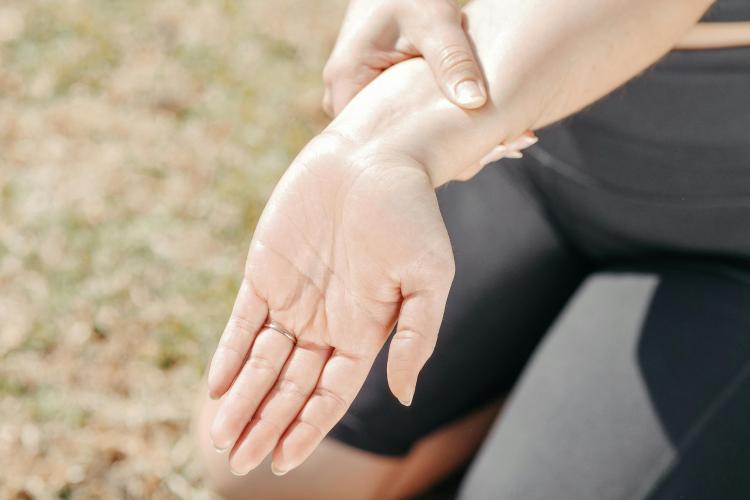Women who work in an office face an array of issues that can lead to pain in the feet, back, neck, and wrists. Making simple changes can reduce the risk of work-related pain and injury, says Jason Fond, MD, Director of Orthopedic Surgery at Montefiore Nyack Hospital.
“Many sources of pain and injury in women are related to the shoes and bags they wear to work,” Dr. Fond says. “Women who wear high heels all day, every day are at increased risk of developing bunions, corns, calluses, hammertoes or pain in the ball of the foot.” The best solution is to wear shoes with a low heel—ideally, no more than an inch and a half. Choosing a shoe with a little bit of a platform will allow you to get more height without going too high on the heel. If you insist on wearing high heels, don’t do it every day—give your feet a break from time to time.
Wearing a large shoulder bag filled with heavy items puts a strain on your neck, shoulder and back. “Options such as cross-shoulder bags and backpacks take some of the weight off your shoulder and reduce the strain,” Dr. Fond says. “If you are going to use a shoulder bag, empty it out once a week and see what you don’t really need to carry around. Is there anything you can have two of, and leave one at the office and one at home, so don’t need to carry it?” Switch the bag from one shoulder to another occasionally to reduce the strain on one side of the body.
If you’re using a computer all day, it’s important to evaluate your workspace—chair, keyboard, monitor—and see if there are ways to make adjustments that will ease the strain on your body.
- Chair: Adjust the height so your feet rest flat on the floor or on a footrest, and your thighs are parallel to the floor. If you have armrests, adjust them so your arms can rest on them with your shoulders relaxed. Adding a lumbar support to the back of the chair can ease back pain. Some people find getting rid of their chair altogether and using a standing desk instead helps with back and shoulder pain.
- Monitor: Place it directly in front of you, about an arm’s length away. The top of the screen should be at, or slightly below, your eye level.
- Keyboard and Mouse: Position the keyboard directly in front of your body. Ideally, your keyboard height should allow you to sit with your shoulders relaxed, with your elbows in a slightly open position and your wrists and hands straight. Put the mouse within easy reach, on the same surface as the keyboard.
- Phone: If you talk on the phone and type or write at the same time, use a headset or Bluetooth instead of cradling the phone between your head and neck to avoid neck strain.
- “Take a short stretch break every half hour or so if you can,” Dr. Fond advises. “Try to get away from your computer during lunch. The key to avoiding any type of strain is to vary your movements so you’re not exposing your muscles to micro-traumas over and over. No matter how well you have set up your work station, staying in the same position for long periods will take a toll on your body.”



 Upcoming Events
Upcoming Events



